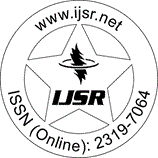Downloads: 12
India | Biodiversity and Conservation | Volume 14 Issue 6, June 2025 | Pages: 115 - 133
Species Distribution Modelling (SDM) of Panthera tigris tigris and Prediction of Suitability of Habitats based on its Presence Locations and Environmental Variables
Abstract: Over the past century tiger numbers have fallen dramatically, with a decreasing population trend. None of the Tiger Conservation Landscapes within the Bengal tiger range is large enough to support an effective population size of 250 individuals. Habitat losses and the extremely largescale incidences of poaching are serious threats to the species survival. The most significant immediate threat to the existence of wild tiger populations is the illegal trade in poached skins and body parts between India, Nepal and China. There are well-organized gangs of professional poachers, who move from place to place and set up camp in vulnerable areas. Other factors contributing to their loss are urbanization and revenge killing. Farmers blame tigers for killing catt le and shoot them. Their skins and body parts may however become a part of the illegal trade. The illicit demand for bones and body parts from wild tigers for use in Traditional Chinese medicine is the reason for the unrelenting poaching pressure on tigers on the Indian subcontinent. The study aims to predict and model the distribution of the species Panthera Tigris Tigris by combining various climatic, human influence, and environmental factors so as to predict alternate ecological niche for the already dwindling tiger habitats in India. The specific area for the study has been considers Uttaranchal state. The data were collected from Worldclim and Indian Biodiversity portal. The models used in the study were Google Earth Engine, GIS and MAXENT. The total data points were 313, and 50 data points were considered for training and balance for testing. Regularized training gain is 1.066, training AUC is 0.888, unregularized training gain is 1.272. Unregularized test gain is 1.064. Test AUC is 0.866, standard deviation is 0.032. Percent contribution and Permutation importance are 95.8 and 72.2 for one set of variable and 4.2 and 27.8 for other set of variable respectively. The best area for prediction is emerged as Deharadun, Haridwar, Paudi Garwal and Nainital. Which indicates that prediction is robust and derived results are trustworthy.
Keywords: GIS, Biodiversity, Morphology, Tiger Conservation Landscapes, Tiger Conservation Units (TCUs), Maxent
How to Cite?: Praveer Agrawal, Rajani Kant Awasthi, "Species Distribution Modelling (SDM) of Panthera tigris tigris and Prediction of Suitability of Habitats based on its Presence Locations and Environmental Variables", Volume 14 Issue 6, June 2025, International Journal of Science and Research (IJSR), Pages: 115-133, https://www.ijsr.net/getabstract.php?paperid=SR25530145547, DOI: https://dx.doi.org/10.21275/SR25530145547
